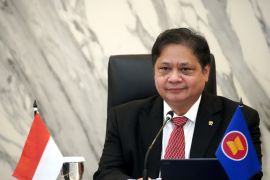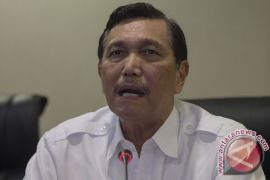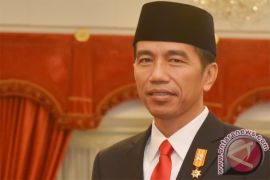I do not know how to export my products."Jakarta (ANTARA News) - Wahab an Nasaru is one of many gemstone artisans who ironically have had to close their businesses while their products are still highly sought-after in the international market, ahead of trade liberalization in Southeast Asia.
Local market saturation has forced gemstone merchants out of business because they cannot sell their merchandise in other countries.
"I do not know how to export my products," Wahab, a stone craftsman from Gorontalo who speaks English fluently, said in Jakarta recently.
When asked whether the upcoming ASEAN Economic Community (AEC), which will allow free movement of goods and services around Southeast Asia, can help him reopen his business again because it could open up the international market, Wahab, looked gloomily and shook his head while saying that he was unsure.
The Association of Southeast Asian Nations (ASEAN) comprises Indonesia, Brunei Darussalam, Thailand, and The Philippines, along with Singapore, Malaysia, Vietnam, and Cambodia. Laos and Myanmar make up the group.
The Wahab situation is rather ironic and contrary to a statement from the Ministry of Trade earlier this year. The ministry said that one of the in-demand products overseas from Indonesia is handicraft jewelry, just like the ones that Wahab made.
Theoretically, trade liberalization that will take full effect in the beginning of next year, should help Wahabs small enterprise to make a fresh start since reduced tariff barriers will increase his competitiveness in the overseas market.
However, the lack of knowledge over export procedures and ASEAN product standardization are seriously affecting the chances of small enterprises to succeed in the new era.
Wahab and his counterparts seem to have insufficient understanding of these technical issues.
Another complication that arises concerning the AEC is the lack of financial support for small and medium enterprises.
Muhammad Irfandi, a small textile entrepreneur from Medan, said that the government should allocate more funds to help him market his products in other ASEAN countries.
International trade needs great amount of capital to keep production going, Irfan explained. Besides, it needs to pay shipment insurance that causes a spike in the product price.
"The reality is more difficult than what the government says," Irfan said.
Small and medium enterprises are vital to the Indonesian economy. They account for more than 97 percent of the national workforce but only contribute around 16 percent of the countrys non-oil and gas exports in 2014, down four percent from 2003.
This figure falls short when compared to those in other ASEAN countries. Thailands small and medium enterprises, for example, contribute 30 to 40 percent of the country total exports.
"Most small enterprises in Indonesia still do not know what to expect or anticipate from the AEC," lecturer at Gadjah Mada University, Randy Nadyatama, wrote in The Diplomat magazine, June.
From a statistical point of view, his statement is quite correct because the data shows that only 0.5 percent of Indonesian small and medium enterprises export their products.
He proposed that to succeed in the AEC the government should boost competitiveness between local small enterprises by granting special tax breaks, providing assistance in information technology, offering help in ASEAN customs systems, and invigorating the banking systems to support market expansion.
This year, the administration said that they would reduce the soft load credit interest to nine percent for 2016 from 22 percent in the last year to help small enterprises expand their market.
However, small enterprises still badly need fresh funds to export their products since it has only acquired Rp8 trillion this year, as export financing fell short from the Rp75 trillion needed.
The government also gave standardization training to 74,000 small and medium enterprises to assist them in exporting their products. However, this figure is only a small fraction of the 48.9 million micro, small, and medium businesses operating in Indonesia.
Another concern regarding small enterprises is the "race to the bottom" trend that is predicted to happen after the implementation of the AEC.
The phrase is used to describe deregulation and lower tax competition from a free trade area to attract big business to invest in one country.
Some analysts said that the race to the bottom competition could severely impact small business because the government policy (tax holiday, etc.) will only benefit big multinational corporations.
The imminent implication is the rise in unemployment, especially among unskilled workers.
In conclusion, the AEC will surely provide unlimited opportunities for Indonesias small and medium enterprises to compete and expand their market overseas.
The free trade agreement is also expected to usher in potential benefits to 600 million inhabitants in the Southeast Asian country.
It could make them the fourth largest economy in the world for the next 15 years with over eight percent economic growth.
However, success is not going to fall out of the sky. The government should make necessary preparations because small enterprises still need its help.
(T.G005/INE/KR-BSR/F001)
Reporter: GM Nur Lintang
Editor: Priyambodo RH
Copyright © ANTARA 2015









